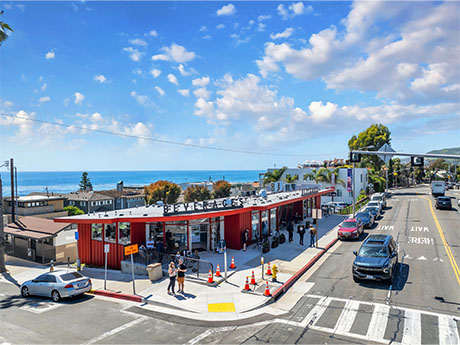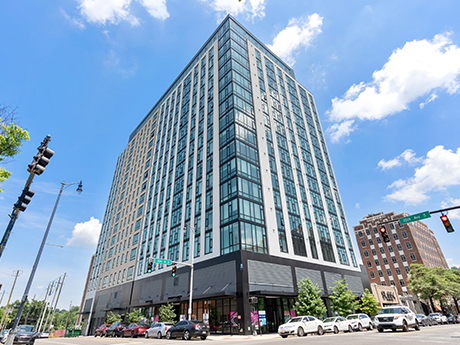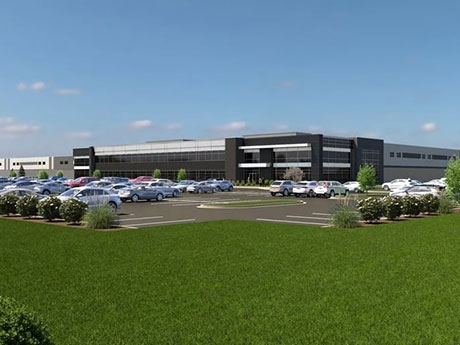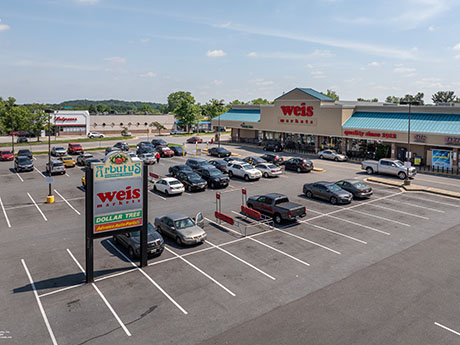— By Shane Shafer of Northmarq — The Orange County apartment market is one of the most dynamic and sought-after real estate sectors in Southern California. Known for its beautiful beaches, high quality of life, and proximity to major job centers like Los Angeles and San Diego, Orange County has become a prime location for renters. As of 2025, the apartment market in the area is marked by a blend of high demand, rising rents, and an evolving landscape shaped by both economic and demographic trends. The demand for apartments in Orange County has been consistently strong in recent years. This is driven by both local and regional factors. The county’s thriving economy — bolstered by sectors like technology, healthcare, tourism and finance — provides ample job opportunities, making it an attractive place for workers from across the state and beyond. This influx of talent, combined with a relatively low housing supply, has kept rental demand high, particularly in areas near major employment hubs, such as Irvine, Costa Mesa and Anaheim. The region’s high desirability keeps apartment vacancies generally low, with occupancy rates often nearing or surpassing 95 percent. New construction, while robust, has not fully kept pace with the …
Market Reports
By Taylor Williams AUSTIN, TEXAS — On the surface, Austin has everything that expanding retail and restaurant operators could possibly want: youth, density, culture, high-paying jobs. Yet when these users begin scouting and diving into the state capital’s retail real estate market, they often find that entering or expanding there is much easier said than done. Skyrocketing home prices, increased vehicular congestion and limited infrastructure outside the urban core are just the most visible ways in which Austin has been somewhat victimized by its own torrid growth over the past 10 to 15 years. And each of those variables factors into retail site selection and contributes to the challenges of adding new retail and restaurant space to the market. Editor’s note: InterFace Conference Group, a division of France Media Inc., produces networking and educational conferences for commercial real estate executives. To sign up for email announcements about specific events, visit www.interfaceconferencegroup.com/subscribe. Simply put, if there are no rooftops, roads, parking spaces and utilities, there can be no new retail development. Such is the story in some of Austin’s more remote suburbs, though few doubt that those preliminary requirements for retail growth will eventually be delivered. But there is also the issue of raw …
— By John Read of CBRE Retail Investment Properties-West — The expression “in the black” signifies financial health, a positive outlook, investment opportunities and growth. It’s a phrase that’s resonating strongly with investors, as Orange County’s thriving retail fundamentals spur robust demand for investment properties. Despite ongoing capital market volatility and fluctuating interest rates, Orange County remains a prime target for retail property investors. The county’s strong retail property fundamentals is driven by its diverse, affluent and highly educated population. The average household income in Orange County exceeds $157,000, with more than 46 percent of residents holding a bachelor’s degree or higher. It also boasts a low unemployment rate of 3.8 percent. Retail property fundamentals concluded the fourth quarter of 2024 with a county-wide availability rate of 3.8 percent, down from the previous quarter. This reduction was fueled by sustained demand, limited inventory, minimal future supply, 547,000 square feet of positive net absorption and an average asking rent of $2.57 per square foot, a $0.13 increase from the prior year. These positive trends, combined with limited new retail property construction (only 190,000 square feet of supply, representing 0.1 percent of existing inventory and the lowest share among the nation’s 40 …
Limited Construction Starts Should Help Birmingham Absorb Available Apartments in 2025
by John Nelson
Southeast Real Estate Business recently caught up with John McCrary, director of investment sales in Berkadia’s Birmingham office, to discuss trends in the local apartment market. McCrary, who specializes in investment sales in Alabama, east Tennessee and southern Mississippi, says that Birmingham’s occupancy will likely take a hit as new deliveries hit the market in the first half of the year, but there’s optimism that renters will be able to absorb those availabilities in short order. “With approximately 800 units expected to be delivered at the beginning of 2025, vacancy rates are likely to rise throughout the year,” says McCrary. “However, the slowdown in construction starts should help absorb existing units and eventually reduce the elevated vacancy rate.” The following is an edited interview: Southeast Real Estate Business: What major local or macro-economic trends are affecting the multifamily market in Birmingham? John McCrary: The interest rate environment is a key factor influencing multifamily dispositions, both in the Southeast and nationwide. Fluctuations in interest rates impact borrowing costs for developers and investors, thereby affecting the supply and demand for multifamily properties. Over the past year, Birmingham has seen strong multifamily demand, but it hasn’t kept pace with the influx of new …
By Jason Capitani, L. Mason Capitani/CORFAC International The automotive industry and business as a whole have always operated in cycles. Looking back at 2009, when Southeast Michigan faced significant challenges, the region’s recovery in the years that followed shows how resilient the local economy can be. Yet, as we navigate today’s post-COVID landscape, some still hope for a more gradual and stable recovery. Though questions remain about whether Detroit should have seen a market correction years ago, or if electric vehicle programs have artificially propped up the economy, only time will tell. Michigan’s jobless rate hovers around 4 percent, lower than the national average of over 7 percent, marking the lowest level since before the pandemic. The state has added over 450,000 jobs since 2020. While the automotive sector remains dominant, other thriving industries include advanced manufacturing, defense, IT, medical devices, food processing and logistics. 2025 outlook: early weakness with potential for shift Demand for industrial space in late 2024 and early 2025 has been weaker, with net absorption at its lowest since 2021. This dip might signal a shift in the auto industry, with some speculating a return to hybrid or combustion engine production, though these decisions take time …
By Nellie Day Metro Phoenix’s population grew to include more than 5 million people in 2023, per the Census, making it the second fastest-growing large U.S. city that year. This increase in residents and employment opportunities naturally brought new, emerging and different retailers to the area, who quickly occupied both existing centers and new developments. Phoenix-headquartered Vestar’s activity paints a picture of how this retail market has grown with its population. In the last quarter of 2024 alone, Vestar broke ground on Verrado Marketplace, a 500,000-square-foot shopping center in Buckeye; ushered in a new wave of tenant openings at Las Tiendas Village in Chandler and Queen Creek Marketplace in Queen Creek; and brought back a seasonal pop-up inside a 50-foot spherical dome at the District at Desert Ridge Marketplace in Phoenix. Balancing Tenant Mix, Community Relevance The key to capitalizing on Metro Phoenix’s growth, the firm says, is focusing on tenant diversification and market positioning. Vestar actively seeks out curated tenant mixes that not only attract foot traffic but align with the demographic and economic profiles of each community. Las Tiendas Village, for example, recently welcomed Marshalls, beauty supply store Happy Beauty, luxury lash spa Revelashons and child-focused hair salon …
Baltimore’s retail market is alive and well and has experienced something of a boom in retail activity, driven in large part by the thriving retail hubs in the city and in the surrounding suburbs. Demand for space continues to be robust and prospective tenants and investors alike are excited to be part of the Baltimore market. But the reasons why are more nuanced than simply piggybacking off the overall growth that brick-and-mortar retail is seeing across the country. Baltimore is a bargain One of the causes is the terrific value that Charm City offers when comparing prices to the major metropolises of Washington, D.C., to the south and Philadelphia to the north. The Baltimore MSA offers attractive demographics and strong retail fundamentals, making it a prime target for local, regional and national investors. A great example is the sale by KLNB’s Retail Capital Markets team of Arbutus Shopping Center in fall 2024, a 88,000-square-foot, grocery-anchored center that attracted significant demand due to its Baltimore County location, sub-$20 million price point and the broader market’s interest in grocery-anchored retail assets. Due to these robust conditions and factors, among other reasons, owners are hesitant to sell — despite the substantial interest …
By Lance Evinger III, Hendricks Commercial Properties In an era where consumers seek more than just products, experience-driven spaces are reshaping the commercial real estate landscape. In Indianapolis, developers and urban planners are increasingly focused on transforming some of the city’s most underutilized yet high-potential areas into dynamic destinations that foster engagement, connection and excitement. Indianapolis boasts a diverse and rapidly evolving commercial real estate market that continues to attract significant investment and development. Key sectors — including office, industrial, retail and mixed-use developments — have experienced steady growth, with a strong focus on adaptive reuse projects and innovative design concepts. The city’s strategic central location, robust infrastructure and thriving convention scene make it a prime destination for businesses and developers alike. Named USA Today’s No. 1 Convention City in the U.S. in 2024, downtown Indianapolis attracts over 10 million visitors annually, a number that continues to grow. In the past year, downtown hotels have set all-time monthly revenue records, fueled by major events like the NFL Combine and NBA All-Star Weekend. At the same time, the Indiana Convention Center has seen a 14.5 percent year-over-year increase in visitors, further cementing the city’s reputation as a top-tier event destination. With …
By Taylor Williams SAN ANTONIO — Automotive parts manufacturers and data center operators both represent major sources of demand for industrial space in San Antonio, as well as major consumers of electrical resources. Both sets of users are increasingly prioritizing access to cheap, abundant electricity in their site selection and other real estate decisions. But that’s about where their similarities end. For the automotive industry has been a source of job growth and retention in the San Antonio area for decades, whereas data centers are a relatively new phenomenon that offer minimal contributions to local employment. And in between the two on the spectrum of industrial end users are third-party distribution and logistics companies, which really represent the market’s bread-and-butter tenant. But these groups typically don’t have such taxing power demands. Editor’s note: InterFace Conference Group, a division of France Media Inc., produces networking and educational conferences for commercial real estate executives. To sign up for email announcements about specific events, visit www.interfaceconferencegroup.com/subscribe. For data center developers and users, the need and demand for affordable, plentiful power is nothing new. And the fact that Texas has long had its own deregulated power grid has contributed mightily to the state landing many of those …
Orange County Boasts Best Industrial Rental Rates in South California, Despite Rising Vacancy
by John Nelson
— By Nick Krakower and James deRegt of SRS Real Estate Partners — The fourth quarter of 2024 revealed significant trends across key indicators in Orange County’s industrial market. For starters, the county’s industrial market vacancy rate was 3.9 percent at that time. This figure represents a continued trend of gradually increasing vacancies, which has consistently occurred over the past eight quarters. The uptick in vacancies can be attributed to increased availability in larger distribution centers and evolving tenant requirements. North County had the largest increase at 4.5 percent. While a 3.9 percent vacancy shows OC’s industrial market remains relatively tight, there is a countywide availability of more than 16 million square feet. Net absorption for the quarter came in at -900,000 square feet. Sectors that rely heavily on logistics and distribution were most impacted, as the move to less expensive space in the Inland Empire continues. Despite the negative figure, leasing activity remains high with quarterly averages of more than 2 million square feet. Net absorption is expected to stabilize with the development pipeline slowing down. Development activity remained strong with 2 million square feet of new industrial space in the pipeline. This new inventory focuses on state-of-the-art facilities designed to …









